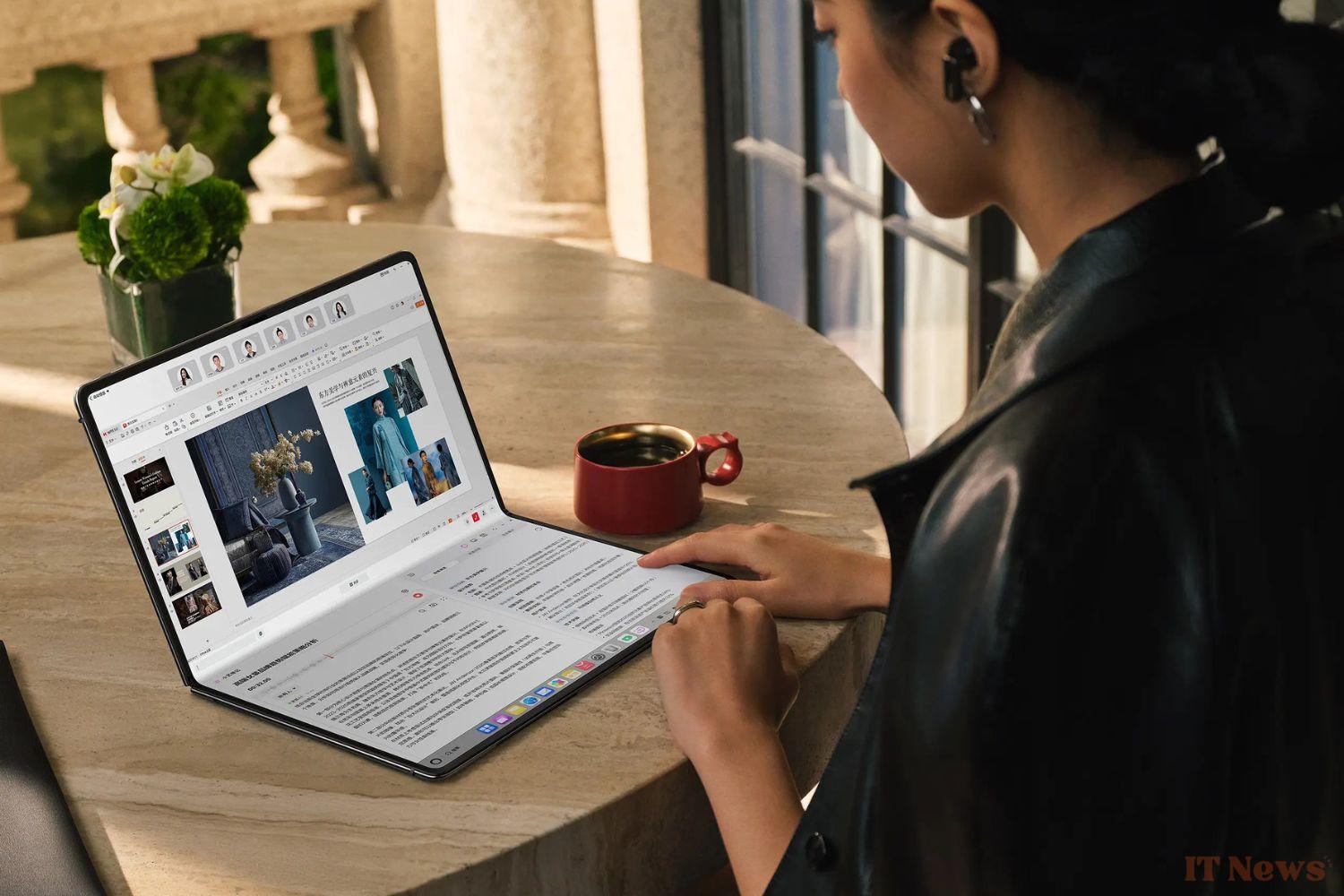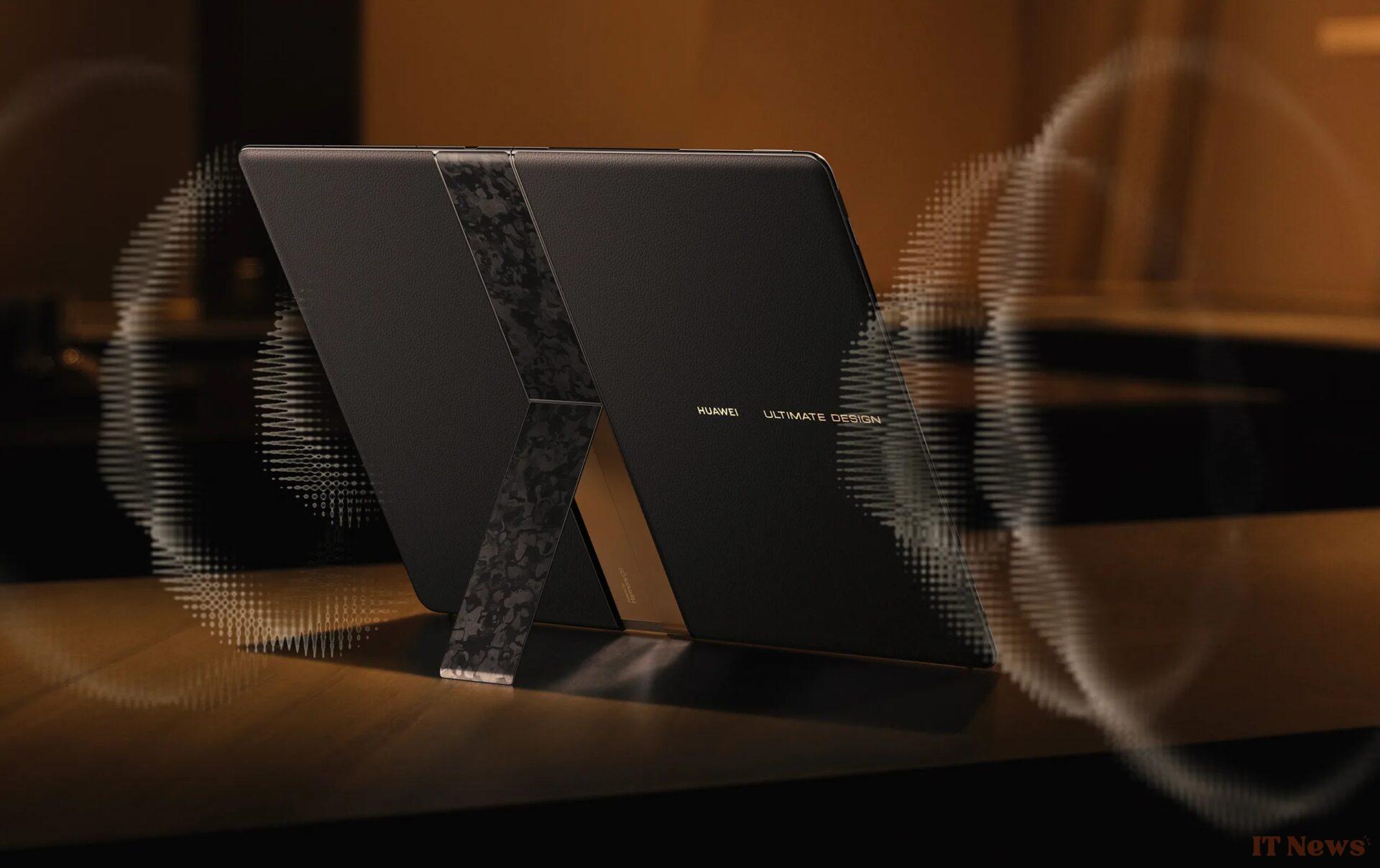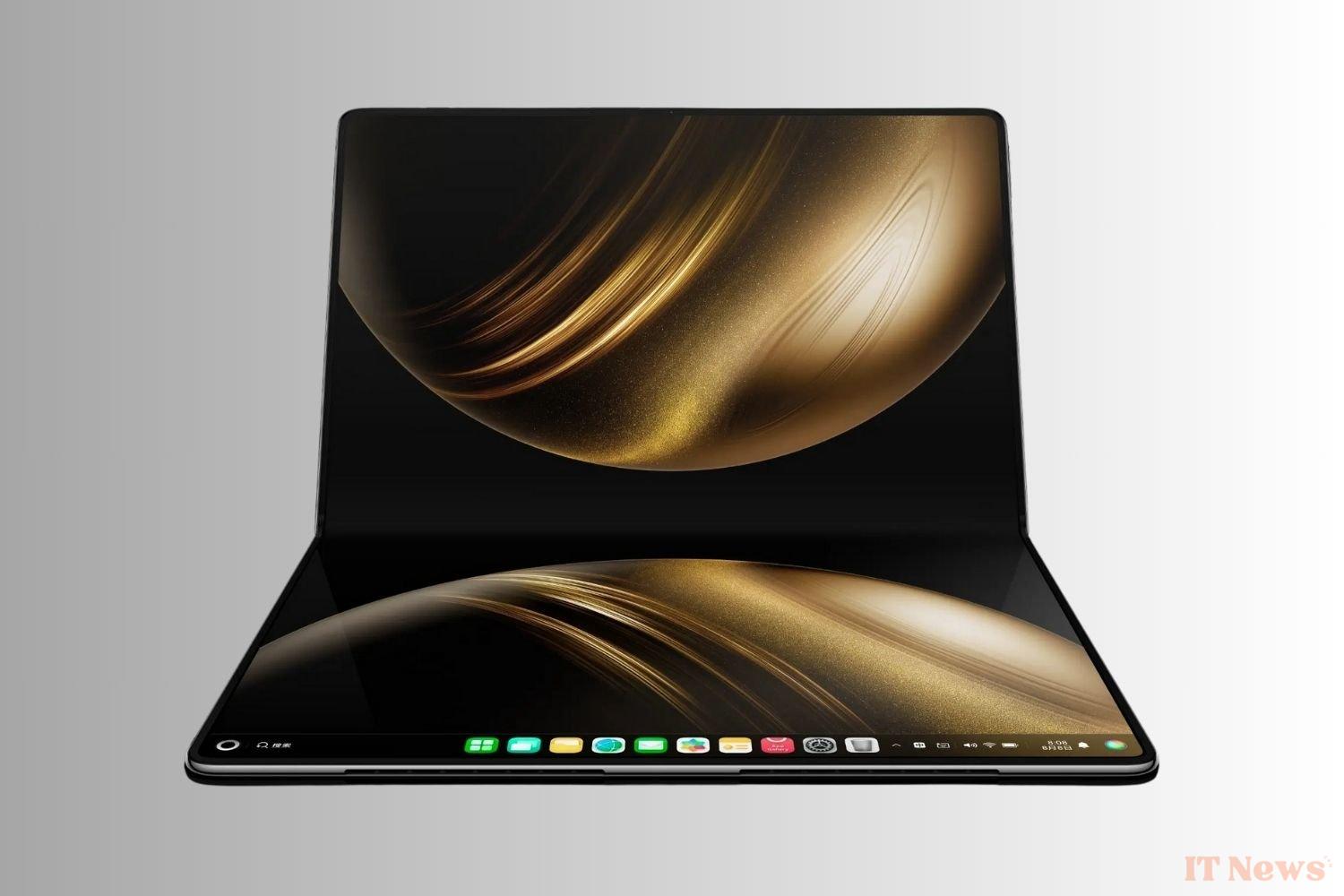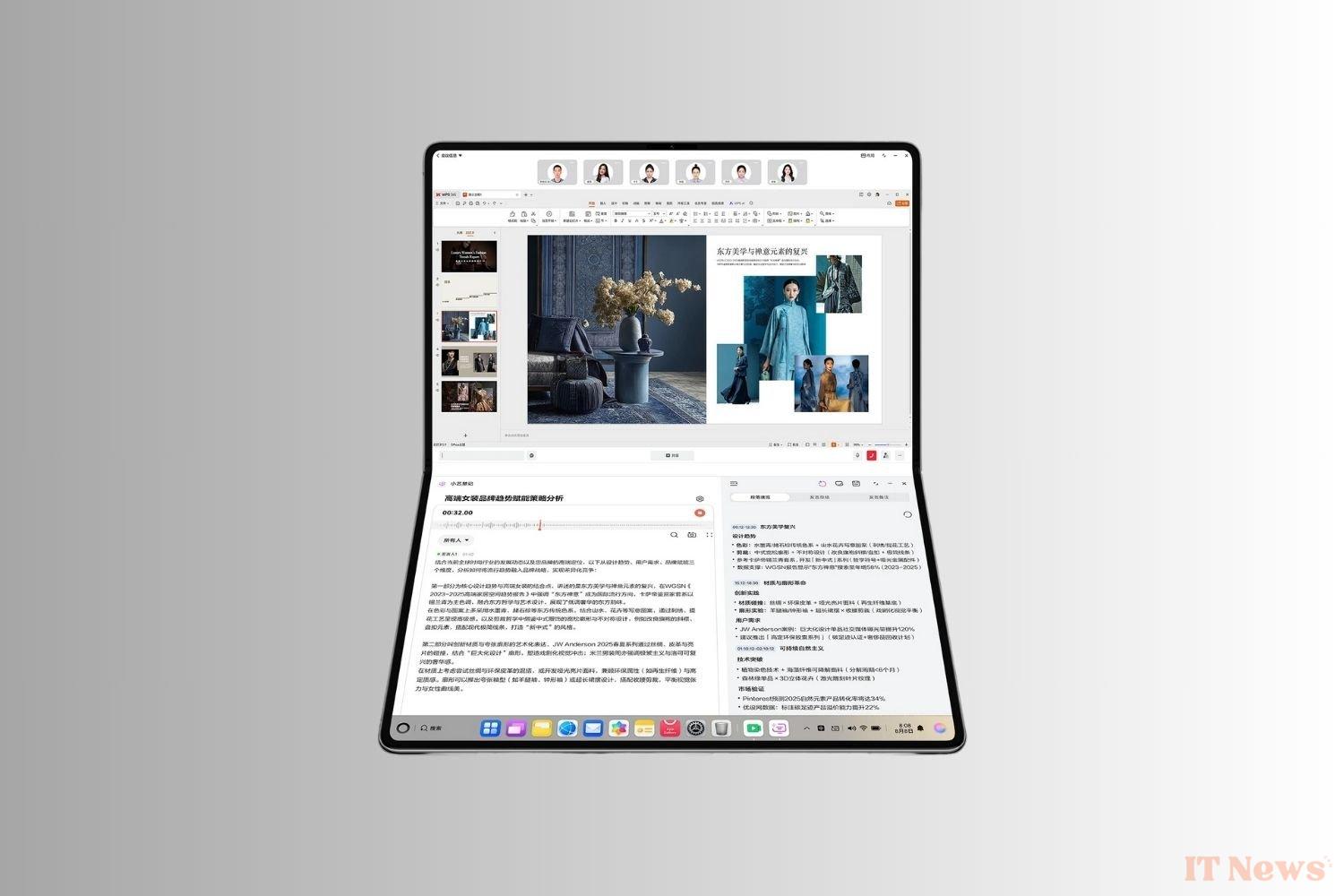Huawei has unveiled its new folding PC, the Matebook Fold. This achieves not one, but two technical feats: it is one of the thinnest on the market, if not the thinnest, and it does not run on any of the traditional operating systems, Windows, MacOS, or Linux. Explanations.
As thin as a smartphone
Let's start with the thinness. The Huawei Matebook Fold measures 7.3 mm when unfolded. To give an idea of the measurement, the Galaxy S25 measures 7.2 mm. We can therefore say that the PC is as thin as a smartphone, to within 0.1 mm.
However, it still has some work to do to catch up with folding smartphones, which go down to values like 4.4 mm, for the Honor Magic V3. As for traditional PCs, they go down to a maximum of 11 mm. As far as we know, this could well be the thinnest folding PC on the market.
With its folding screen, the PC integrates a 90-degree folding mode that mimics the experience of a classic 13-inch in 3:2. When unfolded, it offers 18 inches of diagonal for a definition of 3296 x 2472, a somewhat strange 4:3 ratio.
The entire design of the PC inevitably recalls that of a folding smartphone in book format. On the front, the Matebook Fold really gives the impression of the Mate X6 in XXL format.
The first PC with HarmonyOS
In the technical sheet, one line can be read quite quickly, and yet it is quite strategic for Huawei. The PC's operating system is none other than HarmonyOS 5.
As a reminder, HarmonyOS is the name of the OS developed by Huawei to free itself from the constraints of the American embargo weighing on them. Until now, it has been applied mainly to Android on smartphones and tablets, but this is the first time we've seen it on a PC.
From the start, the HarmonyOS project aimed to create an OS that would be able to run on almost any machine, from PCs to cars, including smartwatches and home automation devices. This first PC running HarmonyOS is therefore an important building block in this pharaonic project that Huawei has embarked on.
Once completed, it will have two benefits for Huawei:
- True independence from large American companies. Huawei lost access to Windows last March, so it was time for the company to find a solution.
- If each device runs on the same reworked OS, this means they will have the same technical base. It will therefore be easier to build bridges between devices and have a powerful ecosystem, thus selling a whole gallery of products to its users.
The rest of the technical sheet unfolds
What is the price of such a gem? Expect to pay around 3,000 euros excluding VAT for the basic configuration, sold only in China for the moment. With such a price, the manufacturer has obviously had fun.
The RAM goes up to 32 GB, the storage starts at 1 TB. The PC includes 6 speakers, 4 microphones. It comes with its 140 W charger, its keyboard, its two storage bags and its small cleaning cloth.
Surprisingly, the manufacturer has not communicated on the processor driving everything. This is reminiscent of the launch of the latest Huawei smartphones which received the same treatment. Deprived of the latest American chips, the Chinese firm had to turn to in-house chips that were slightly outdated technically and therefore preferred to keep this detail under wraps.






0 Comments